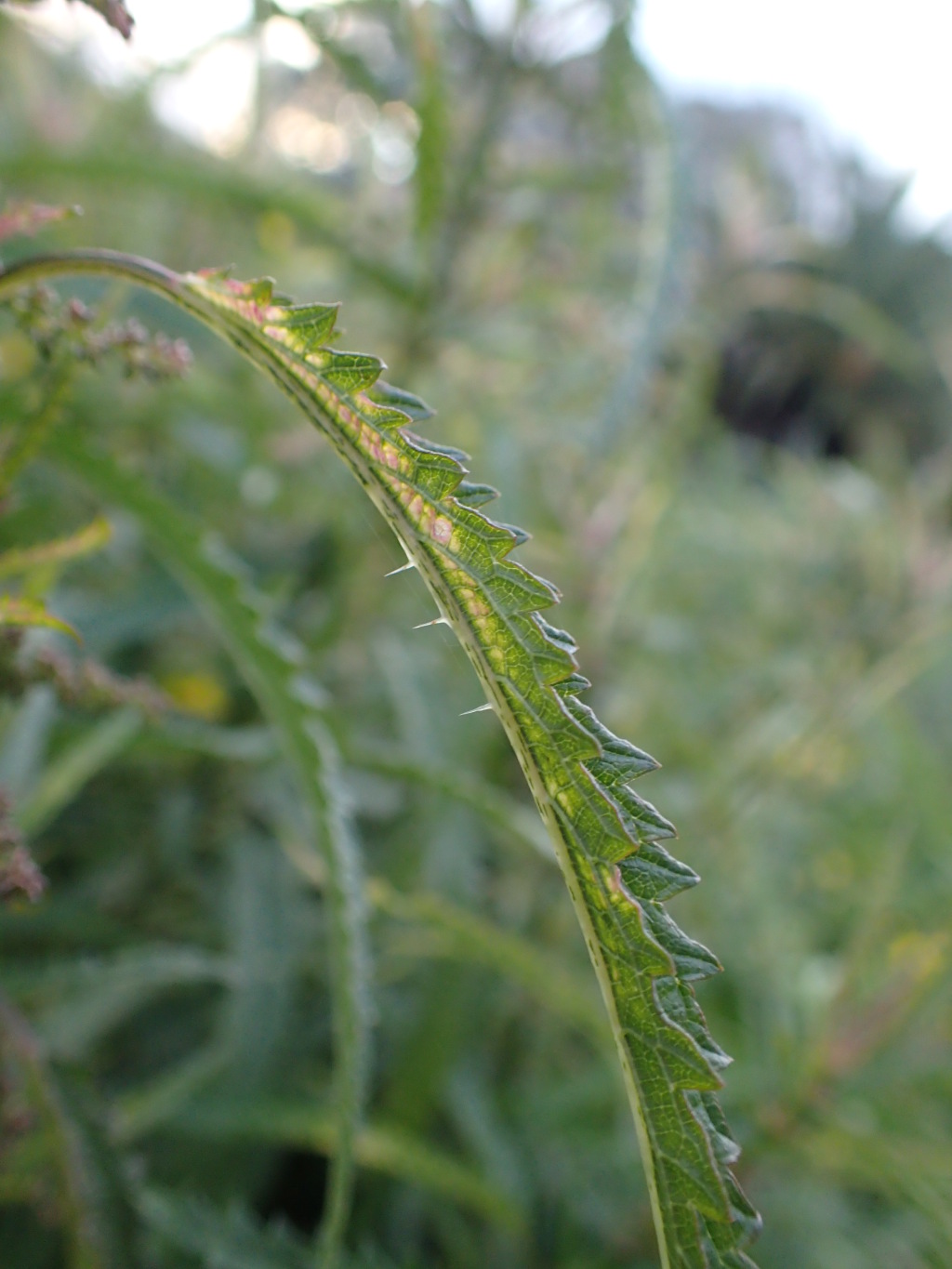Urtica incisa
Poir. Scrub NettleDioecious or monoecious perennial herb to 1.5(–2) m high, leaves and stems (except for very young tips) glabrous or nearly so between the scattered stinging hairs. Leaves oblong or lanceolate to broadly ovate; base cuneate, truncate or cordate; margins regularly dentate; apex acute to acuminate; lamina 6–15 cm long, 1–8 cm wide; petioles shorter to longer than lamina; stipules 2–4 mm long. Male inflorescences 2–8 cm long, usually longer and sparser than females, when plants monoecious, female inflorescences generally arising in upper nodes and males below, occasionally some nodes with mixed male and female inflorescences. Male flowers with tepals c. 1.5 mm long. Female flowers with short (c. 0.6 mm long), and long (c. 1 mm) tepals, glabrous. Flowers all year, but mostly Sep.–Mar.
GleP, Brid, VVP, VRiv, MuF, GipP, OtP, WaP, Gold, CVU, DunT, NIS, EGL, EGU, WPro, HSF, HNF, OtR, Strz, MonT, HFE, VAlp. Also WA, SA, Qld, NSW, ACT, Tas. New Zealand, New Caledonia. Widespread and locally common in cooler parts of Victoria, particularly on margins and in clearings within rainforests, wet open-forests swamps and amongst rocks (particularly basalt or limestone).
Urtica sykesii Grosse-Veldmann & Weigend has been reported from Victoria (and Australia) on the basis of a single (1908) specimen purportedly collected from Casterton and now housed in the Paris herbarium. This otherwise New Zealand endemic is differentiated from U. incisa on the basis of its extensively rhizomatous habit, smaller stature (rarely above 30 cm high), shorter (20–60 mm), relatively broader (20–50 mm) leaves and male and female inflorescences occurring on the same plants, with females confined to upper nodes. It's considered likely that the Paris (Casterton) specimen may have been mixed or mislabelled in transfer from Australia, or less credibly, that the specimen represents a transient introduction of U. sykesii into Victoria from New Zealand. Nonetheless, plants of U. incisa from deeply shaded forests do share some characteristics approaching those of U. sykesii (e.g. inflorescence distribution, relatively broad leaves), but remain generally tall plants and with leaves larger than those described for U. sykesii. They correspond to the type form of U. lucifuga Hook.f., now regarded as a part of U. incisa, the earlier published name. Hooker recognised two varieties of U. lucifuga, with var. linearifolia Hook.f. equivalent to 'typical', narrow-leaved U. incisa. Further study may suggest that formal recognition of two varieties (within U. incisa) is warranted.
Entwisle, T.J. (1996). Urtica. In: Walsh, N.G.; Entwisle, T.J., Flora of Victoria Vol. 3, Dicotyledons Winteraceae to Myrtaceae, pp. 82–84. Inkata Press, Melbourne.
 Spinning
Spinning




